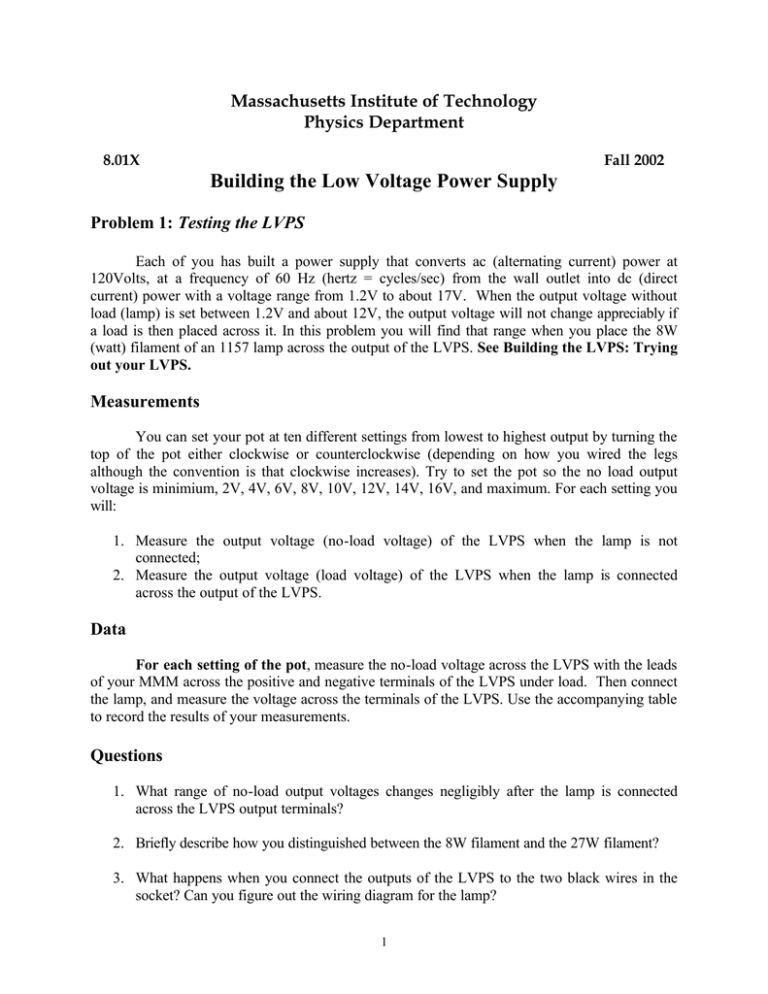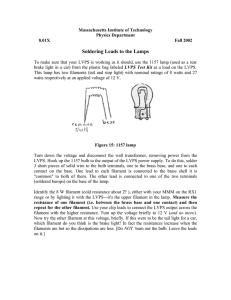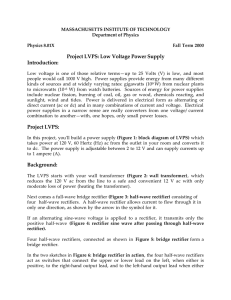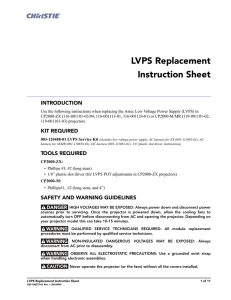Building the Low Voltage Power Supply Massachusetts Institute of Technology Physics Department
advertisement

Massachusetts Institute of Technology Physics Department 8.01X Fall 2002 Building the Low Voltage Power Supply Problem 1: Testing the LVPS Each of you has built a power supply that converts ac (alternating current) power at 120Volts, at a frequency of 60 Hz (hertz = cycles/sec) from the wall outlet into dc (direct current) power with a voltage range from 1.2V to about 17V. When the output voltage without load (lamp) is set between 1.2V and about 12V, the output voltage will not change appreciably if a load is then placed across it. In this problem you will find that range when you place the 8W (watt) filament of an 1157 lamp across the output of the LVPS. See Building the LVPS: Trying out your LVPS. Measurements You can set your pot at ten different settings from lowest to highest output by turning the top of the pot either clockwise or counterclockwise (depending on how you wired the legs although the convention is that clockwise increases). Try to set the pot so the no load output voltage is minimium, 2V, 4V, 6V, 8V, 10V, 12V, 14V, 16V, and maximum. For each setting you will: 1. Measure the output voltage (no-load voltage) of the LVPS when the lamp is not connected; 2. Measure the output voltage (load voltage) of the LVPS when the lamp is connected across the output of the LVPS. Data For each setting of the pot, measure the no-load voltage across the LVPS with the leads of your MMM across the positive and negative terminals of the LVPS under load. Then connect the lamp, and measure the voltage across the terminals of the LVPS. Use the accompanying table to record the results of your measurements. Questions 1. What range of no-load output voltages changes negligibly after the lamp is connected across the LVPS output terminals? 2. Briefly describe how you distinguished between the 8W filament and the 27W filament? 3. What happens when you connect the outputs of the LVPS to the two black wires in the socket? Can you figure out the wiring diagram for the lamp? 1 Graph Plot the output voltage of the LVPS without the lamp connected along the horizontal axis and the output voltage of the LVPS with the lamp connected along the vertical axis. Data Table for LVPS Problem VLVPS (load) [volts] VLVPS (no load) [volts] minimum 2 4 6 8 10 12 14 16 maximum 2








